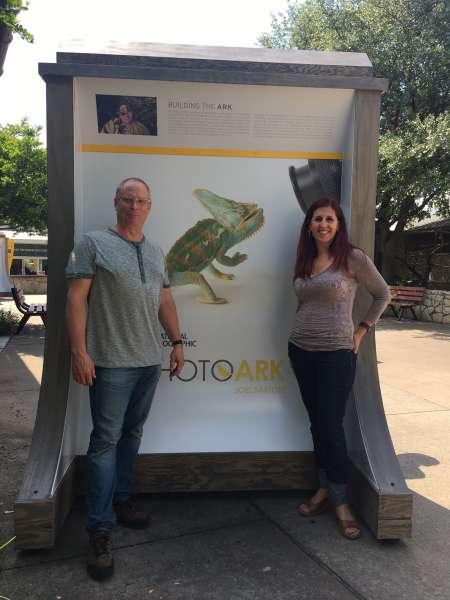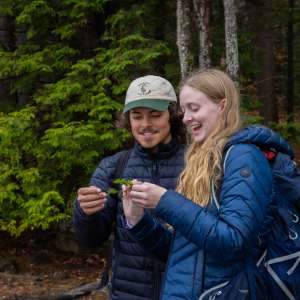Portraits of Endangered Animals: Exhibit Brings Together Two Alumni

Our hope is that people will look these creatures in the eyes, and be inspired to care, while there is still time. – Photographer Joel Santore’s Photo Ark website
A National Geographic exhibit calling attention to the plight of endangered animal species has a Keene State connection – times two. Rich McWalters ’79 of Washington, DC, designed a series of kiosks for the National Geographic Photo Ark exhibition. As the project manager, he brought in Mecca Design & Production, a Dallas-based fabricator, to create the kiosks. The project manager at Mecca happened to be Sara Gradual ’95. They didn’t know the connection at first, but were delighted to discover, via LinkedIn, that both had earned degrees at Keene State.
“We definitely hit it off, both professionally and personally,” says McWalters. “It was a wonderful project to work on, and it turned out fabulous.”
Photo Ark is a collection of photographer Joel Sartore’s studio portraits of animals. As Sartore writes on his website, he began his quest to photograph all the approximately 12,000 species of animals that are in human care as a way to “get people to care that we could lose half of all species by the turn of the next century.”
Through National Geographic’s traveling Photo Ark exhibit, which was featured at zoos in Dallas, Omaha, and Cincinnati this summer and is currently on view at the Los Angeles Zoo and Botanical Gardens, people can get up close – and take selfies with – giant prints of the photos that are on the kiosks designed by McWalters and produced by the company where Gradual works.
“I really enjoyed working with Rich; it was a really good experience,” says Gradual, who coordinated the production of three sets of 28 kiosks.
Gradual and McWalters arrived at their respective careers by leap-frogging off their college coursework.
McWalters majored in industrial education. “After graduating I did teach for a little while,” he says, “but I soon learned that my interests were in design and production, design and build. I’ve often said that while I may have the soul of a teacher and my mind is geared toward engineering, my heart beats to the rhythm of an artist.”
A job doing architectural millwork led to work with a company that designed exhibitions – which led, in 1988, to a job at the National Geographic Museum in Washington, DC, where he served first as a design draftsman and then worked his way up through several positions to take early retirement as director of operations. These days, he works as a consultant, including for National Geographic, which contracted with him to manage the Photo Ark traveling exhibit.
Gradual, who designed an individualized major that blended graphic arts and communication – she called it “visual communications” – hopped around after graduation working for hotels and resorts. At the same time, she refined her graphic design skills by taking on internships and moonlighting jobs. She lived and worked in Florida, Colorado, Mackinaw Island, Michigan, St. Thomas, and then New Orleans.
Eventually, she talked her way into a job in customer service with GES, a company that, among other things, helps coordinate corporate events and trade shows. When Hurricane Katrina hit, GES transferred her to Dallas and promoted her. She dropped her plans to move back to New Orleans after she met the man who is now her husband. After a layoff and time off to start her family, she signed on with Mecca, doing primarily sales and project management.
The National Geographic Photo Ark project, with its call to raise awareness of and save disappearing species, has been meaningful for both. Gradual and her family are longtime members of the Dallas Zoo, and frequently visited the large animal photos while they were on display there. “They really made me happy every time I got to see them,” she says.
McWalters says he feels an affinity with the animals Santore depicts. “He’s photographed them with either a black or white background, in a way that takes them out of their environment,” he says. “With traditional wildlife photographs, you’re seeing animals in trees, bushes, grass, and with other animals. But when he does these studio portraits, they become a personality. They become an individual. You see into their eyes, and you get a sense of their feelings.”
Visit the Photo Ark website for more of Santore’s photographs.





